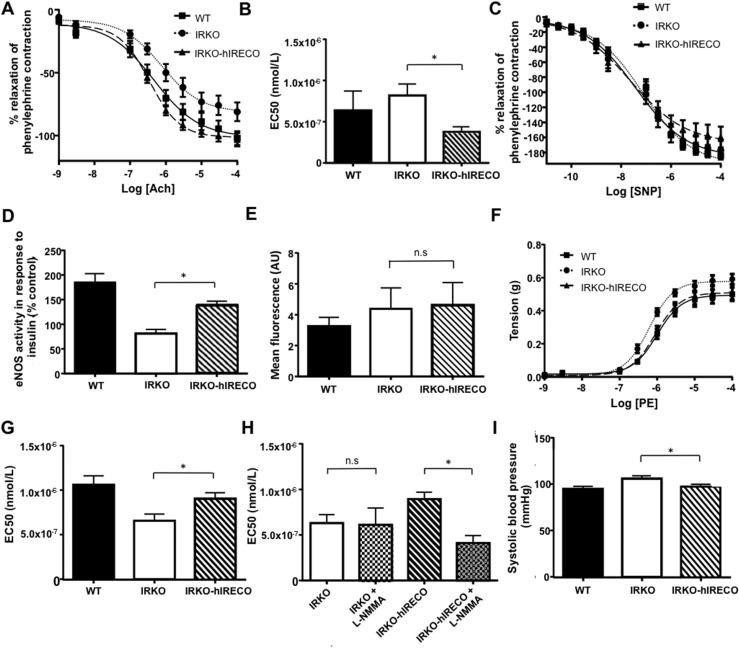Figure 3.
IRKO-hIRECO mice have normalized vasodilator response, NO bioavailability, and blood pressure. (A) Acetylcholine-induced vasodilatation is greater in IRKO-hIRECO than in IRKO and comparable to that in WT mice (n = 7, 10, and 8, respectively). (B) Acetylcholine EC50 data derived from panel (A). (C) SNP-induced endothelium-independent vasodilatation is comparable in IRKO-hIRECO, IRKO, and WT mice (n = 4, 7, and 6, respectively). (D) Insulin-stimulated NO synthase activity is greater in IRKO-hIRECO than in IRKO mice (n = 6, 5, and 6, respectively). (E) Superoxide abundance was similar in IRKO-hIRECO and IRKO mice but greater than in WT mice (n = 6, 7, and 6, respectively). (F) PE-induced vasoconstriction is lower in IRKO-hIRECO than in IRKO mice and comparable in WT mice (n = 7, 10, and 8, respectively). (G) PE EC50 data derived from panel (F). (H) Diminished PE-induced vasoconstriction in IRKO-hIRECO mice is caused by increased NO bioavailability as it is significantly abrogated by the NO synthase antagonist L-NMMA (n = 5 and 5, respectively). (I) Systolic blood pressure is lower in IRKO-hIRECO than in IRKO mice and comparable in WT mice (n = 10, 19, and 18, respectively). Sample sizes are presented in the order WT, IRKO, and IRKO-hIRECO. *P < 0.05. EC50, half-maximal effective concentration; n.s., nonsignificant for IRKO vs IRKO-hIRECO.

